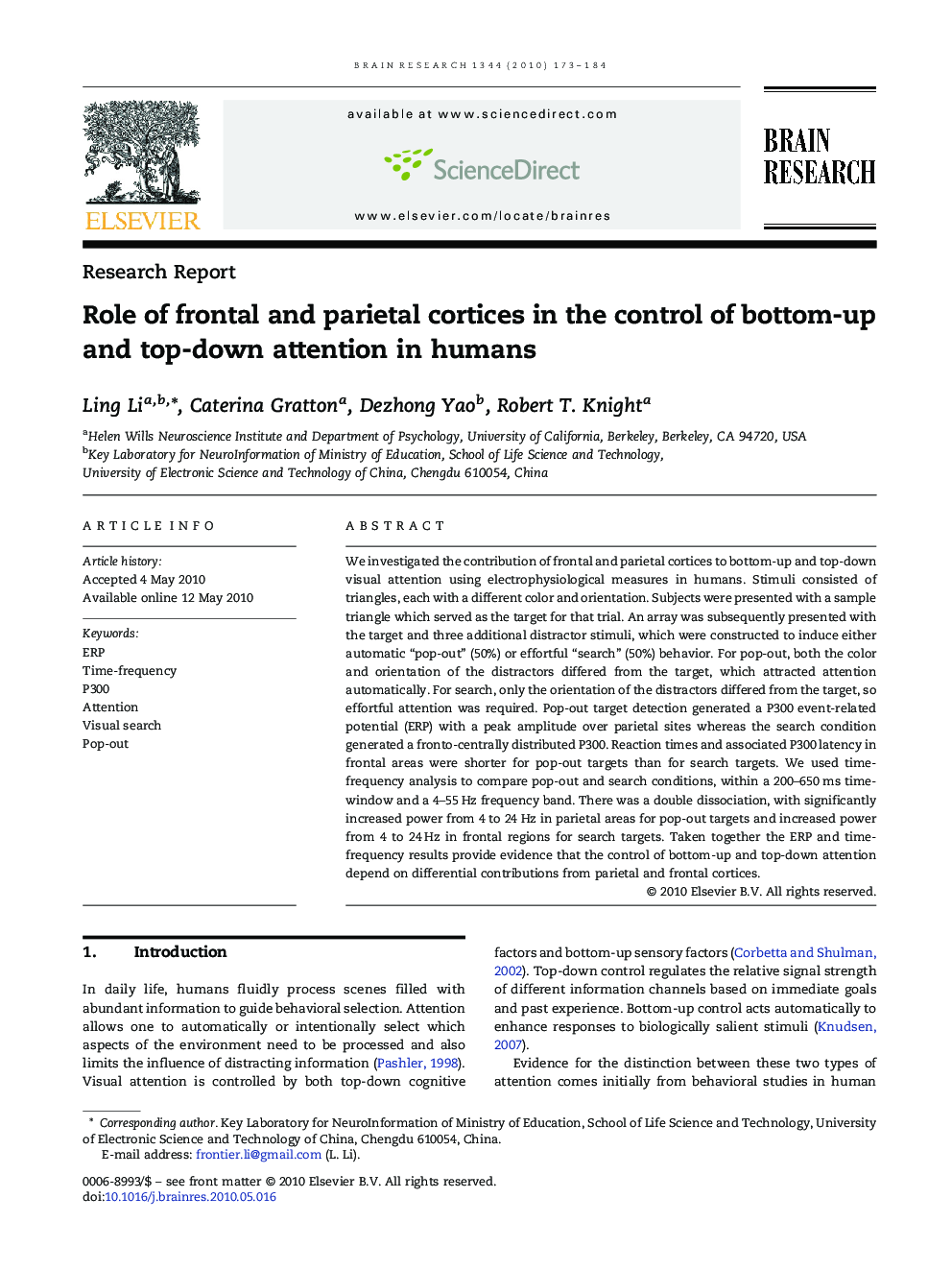| کد مقاله | کد نشریه | سال انتشار | مقاله انگلیسی | نسخه تمام متن |
|---|---|---|---|---|
| 4326832 | 1614095 | 2010 | 12 صفحه PDF | دانلود رایگان |

We investigated the contribution of frontal and parietal cortices to bottom-up and top-down visual attention using electrophysiological measures in humans. Stimuli consisted of triangles, each with a different color and orientation. Subjects were presented with a sample triangle which served as the target for that trial. An array was subsequently presented with the target and three additional distractor stimuli, which were constructed to induce either automatic “pop-out” (50%) or effortful “search” (50%) behavior. For pop-out, both the color and orientation of the distractors differed from the target, which attracted attention automatically. For search, only the orientation of the distractors differed from the target, so effortful attention was required. Pop-out target detection generated a P300 event-related potential (ERP) with a peak amplitude over parietal sites whereas the search condition generated a fronto-centrally distributed P300. Reaction times and associated P300 latency in frontal areas were shorter for pop-out targets than for search targets. We used time-frequency analysis to compare pop-out and search conditions, within a 200–650 ms time-window and a 4–55 Hz frequency band. There was a double dissociation, with significantly increased power from 4 to 24 Hz in parietal areas for pop-out targets and increased power from 4 to 24 Hz in frontal regions for search targets. Taken together the ERP and time-frequency results provide evidence that the control of bottom-up and top-down attention depend on differential contributions from parietal and frontal cortices.
Journal: Brain Research - Volume 1344, 16 July 2010, Pages 173–184